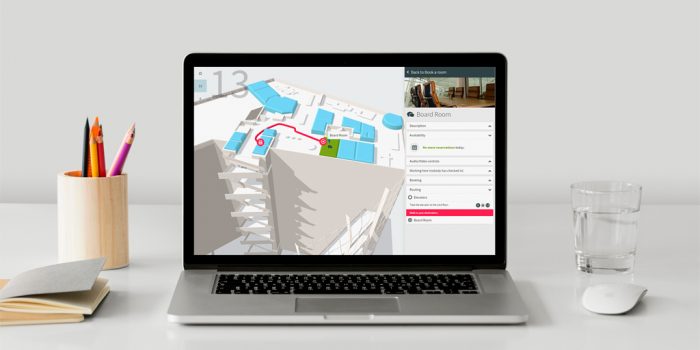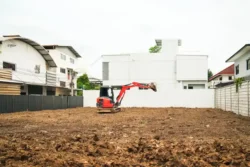5 reasons office space will remain relevant well after COVID-19
Published
July 5, 2021
Published
July 5, 2021

Australian property group Investa issued a report in June 2021 based on the findings of a survey of over 350 office property tenants. The survey was conducted to highlight what businesses thought of the office space culture in a post-COVID world.
Investa’s research highlights five key reasons why office tenants are gripping onto their office premises as a central location for their teams:
- Business advantages
- Future economic and business environment
- Flexible work options
- Employee wellbeing
- Technology and connectivity
At Properties & Pathways, we’re no stranger to the reasons why Australia’s corporate world views office real estate as a necessity. These views from Australian businesses only strengthen the idea that a centralised location is crucial for professional businesses and their teams.
Here are the key findings in the report on office relevance in Australia in a post-COVID world.
1. Business advantages

We’ve already seen reports showing the appetite for Australian businesses to maintain an office environment to keep their employees closely knit. This makes sense when comparing Investa’s report, whereby respondents have said they feel a centralised work location provides them with an advantage over other businesses.
The three key reasons for this are:
- Centrality
- Access to public transport
- Proximity to clients
The ability to share ideas among a cohort of goal-orientated workers, while being closely situated to clients and customers, is what all of us office employees have become accustomed to. While working at home may feel like a luxury (perhaps before the novelty wears thin), the reality is employees are missing out on the collaborative aspect which can only truly be attained by putting heads together under a single roof.
2. Considering future economic and business environment
When surveyed in June 2021, 51 per cent of business respondents intend to maintain their current amount of office space.
This is an astounding number, considering the popularity of smaller floor plates across Australia’s office markets since COVID-19. The strategic presence in a CBD – or even suburban business district – environment is unmatched when a team is scattered across a city in their respective homes.
This is not to say the future of office space is concern-free.
One in eight respondents claim to be unsure about the future impacts COVID-19 will have on the office market and so many have renewed their lease terms for shorter tenures. COVID-19 is still a health risk – and a business risk – to many. Uncertainty continues to plague businesses, but for now it won’t stop them from pursuing a centralised location to house their workers, and to drive productivity and wellness.
Interestingly, many businesses had a pre-pandemic plan to move their staff to a flexible work model. Much like landlords, the best business operators are those who can adapt to change and implement a flexible approach.
3. Flexible work options

Businesses will no longer confine their employees solely to the office. It’s expected that most respondents will allow employees to work from home for an average 1.9 days per week.
The home and office concoction for employees ticks many boxes. Teams are able to take advantage of the collaborative nature an office provides, along with nearby amenity and proximity to clients, while also enjoying the ease of working from home (avoiding traffic and commuting costs, allowing for school pickup and dropoffs, etc) for the remainder of the working week.
Of course, these arrangements may only be for employees whose roles allow them the ability to work remotely (i.e. with a mobile phone and laptop).
4. Employee wellbeing
9 in ten surveyed businesses see employee wellbeing as crucial to decisions on workplace arrangements.
It’s smart really, because employers want their staff to remain productive. Happiness and work satisfaction are pillars when it comes to erecting a productive employee base.
NABERS, Australia’s rating system for a commercial premise’s sustainability against several elements (such as environmental impact and air quality), is a driver for many office landlords and businesses when choosing a CBD premises. A large benefactor is employees, whose wellbeing is taken into account during the NABERS assessment of a property’s sustainability. It is yet another driver for employers to provide excellent working environments for their staff.
5. Technology and connectivity

We will continue to see a demand for technologies to enhance office workplaces.
Businesses are focusing on room booking software and visitor management systems, and in fact have been well before COVID-19. Up to 84 per cent of business respondents were using room booking software prior to the pandemic.
Technology is also enhancing office space design. Proptech – a new word in the vocabulary of many property experts – has already aided white collar businesses. Technology from brands like Mapiq allows clients to optimise their office space, finding their most and least used areas in their premises and uncovering how their employees use (or don’t use) certain functions of the workspace.
This technology demand, along with the many adoptions being made post-coronavirus, will only fuel the continued relevance of office spaces in the eyes of its occupants, as the office market turns a corner after the pandemic.
Want to skip the queue to build your wealth? Our next commercial property syndicate will be opening soon. Subscribe to receive Investment Updates, and we’ll give you the opportunity to see the Information Memorandum and invest with us FIRST.
 Properties & Pathways is a dynamic commercial property investment company. Our completed syndicates have provided investors an average annualised return of 19%. For more information on how you can invest alongside us, get in touch today.
Properties & Pathways is a dynamic commercial property investment company. Our completed syndicates have provided investors an average annualised return of 19%. For more information on how you can invest alongside us, get in touch today.






